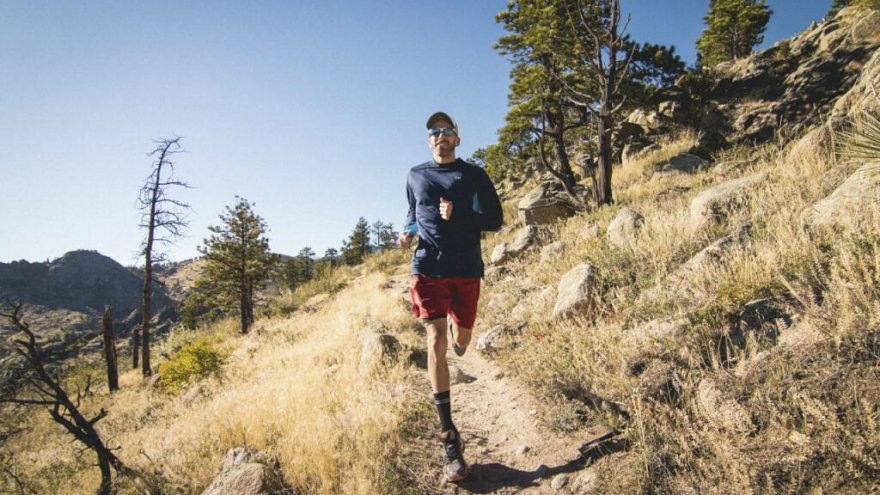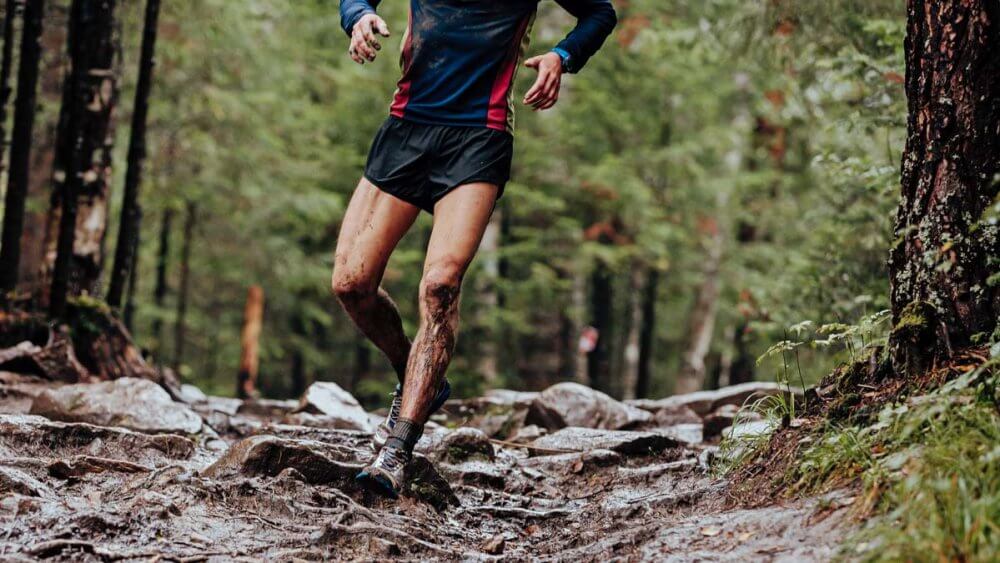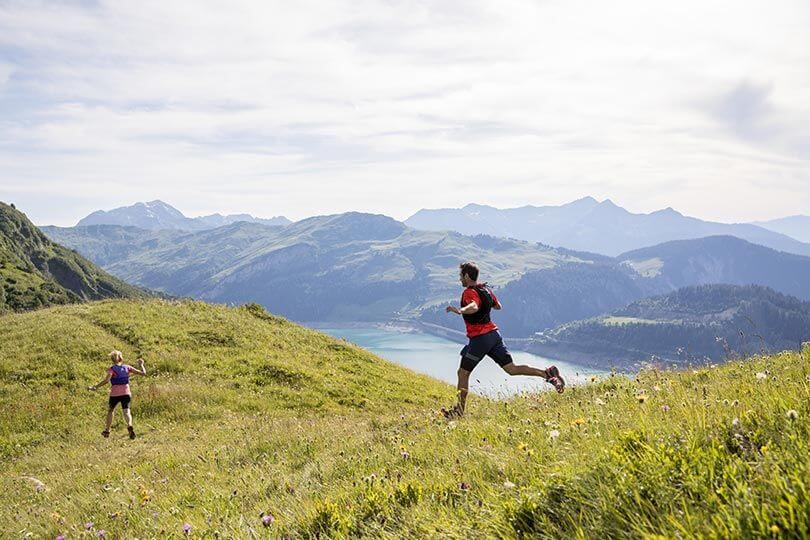The Secret To Downhill Running (And Avoiding Injury!)

What goes up must go down. It stands to reason that if you incorporate hill work into your workout, you will learn to power up and run down.
Runners often contemplate what they need to do to get up the hill feeling strong and powerful.
However, have you ever thought about the process of downhill running? Believe it or not, there is an art to doing to help you avoid injury.
Use The Down For Speed
The first thing about downhill running is perfectly okay to work the downhill to your advantage. If you are racing, this is your opportunity to hit some wicked fast paces as you head down!
Lean Forward From Your Hips: People tend to make one mistake: they lead incorrectly when running downhills. What you want to do is lean into it with your hips. It is very important that you avoid the urge to lean back as you run. Focus on keeping your center of gravity moving with you.
Engage Your Core: If you feel like I say this a lot, you are indeed perceptive, no matter what part of running I am coaching. That is because no matter what aspect of your running you are trying to improve, a strong and powerful core is a crucial piece. If you work your core regularly, it becomes easier to ensure you are engaging it. That means you are tightening it up while you run. It also means that you are not hunched over oddly when running.
Arms for Balance: Coaches often preach about having strong arms and keeping them locked to your side while running. When running downhill, however, the rules change. You can use your arms to help you keep balance as you run downhills. Look at race photos of people racing down hills in trail races for some of the best examples of using your arms for balance down a steep hill.
Focus Down the Hill: Just like when running normally, when you focus a bit ahead of yourself, you should do the same when running downhills. Sometimes people feel compelled to look at their feet. Unless you are on a very technical trail and are worried about footing, you should avoid doing this.
Keeping It Safe
One of the first steps to doing downhill runs safely is to work on them gradually. Find yourself a hill on which you will do repeats. Jog to the hill then set a number of repeats to do. Start with three to four repeats. Power up, fly down. Repeat. Repeat. Jog or run back.
When you start doing hill work, you might find your body hurts in places it does not normally ache. This is normal. More on that later.
As you descent the hill, you should shorten your stride. Your feet should touch quickly and not stay in contact with the ground for a long time.

Think carefully about the type of hills you will be doing, and consider the racecourse you are preparing for. If you are going to be racing on a very hilly course with rolling hills, consider that. A few hill repeats will not adequately prepare your body for what it will experience on a rolling hilly course. If you can find rolling hills with a short drive, it will be time well spent.
All of the advice given regarding running fast can help you run safely. If you are using your arms down the hill, not only will that help you run quickly, it will keep you balanced.
Working on proper form helps to prevent injury. This includes how you carry your body and leaning slightly forward. As always, an engaged core offers you strength and stability as a runner.
Why Do My Quads Ache?
Although running downhill feels fast and easy, it can leave your legs feeling trashed. This is especially true of the quads.
Every time your foot contacts the ground when running, you experience eccentric loading. Your foot hits the ground, and your muscles have to contract to prevent a buckle in your knee. Without even thinking about it, you use your quadriceps to engage, which stabilizes your knees.
Downhill running causes much more eccentric loading to occur, which means more work for your quads. This is why your quads often ache after a run or race that involves a lot of downhill running.
Some runners report knee pain during and after running downhills. This makes sense, as your body is working hard to keep those knees stable with each impact.
You also want to be very aware of each step you take and not run out of control. If you race crazy-like down a hill, you are more likely to trip, fall, and/or twist an ankle. None of these are good things.
Consider Starting On Softer Ground
If you are new to downhills, starting out on a softer surface might prove helpful to you. The hardest surface to run on is concrete, followed by asphalt. Examples of softer surfaces you can run on are grass or dirt. For those not interested in running trails or cross country, this may not seem helpful. But, for those new to hill work, taking this time to learn to run downhills is worth it.

Of course, if you are training for a race with hills, you will need to transition to asphalt to simulate what you will experience on race day!
One More Tip
As I skimmed through some tips on downhill running, an interesting piece of advice jumped out at me. This is one I had never considered. “Clear your mind.” After having told you all kinds of things to focus on, this sounds contradictory, does it not? However, I want you to hear me out.
One of the joys of running downhills is you can run with the reckless abandon of a child. This is your shot. So even though you need to run smart and safe, try to open up your mind to just enjoying the moment. Run smart, but run fast and trouble-free.
Latest Articles
 Is Running on a Treadmill Easier Than Running Outside?Runners have their own preferences, whether it is treadmill running, running outside on the road, or exploring trails. So...
Is Running on a Treadmill Easier Than Running Outside?Runners have their own preferences, whether it is treadmill running, running outside on the road, or exploring trails. So... Is It OK to Use Trail Running Shoes on the Road?While trail running shoes can be used on roads, especially in situations where a runner encounters mixed terrains or pref...
Is It OK to Use Trail Running Shoes on the Road?While trail running shoes can be used on roads, especially in situations where a runner encounters mixed terrains or pref... How to Fix Sore Quads After Running?Rest, ice, gentle stretching, and over-the-counter pain relievers can help soothe sore quads after running. Also, ensure ...
How to Fix Sore Quads After Running?Rest, ice, gentle stretching, and over-the-counter pain relievers can help soothe sore quads after running. Also, ensure ... 10 Fruits With The Most Electrolytes to Replace Sports DrinksThese fruits are high in electrolytes such as potassium, magnesium, and calcium, essential for hydration, muscle function...
10 Fruits With The Most Electrolytes to Replace Sports DrinksThese fruits are high in electrolytes such as potassium, magnesium, and calcium, essential for hydration, muscle function...

